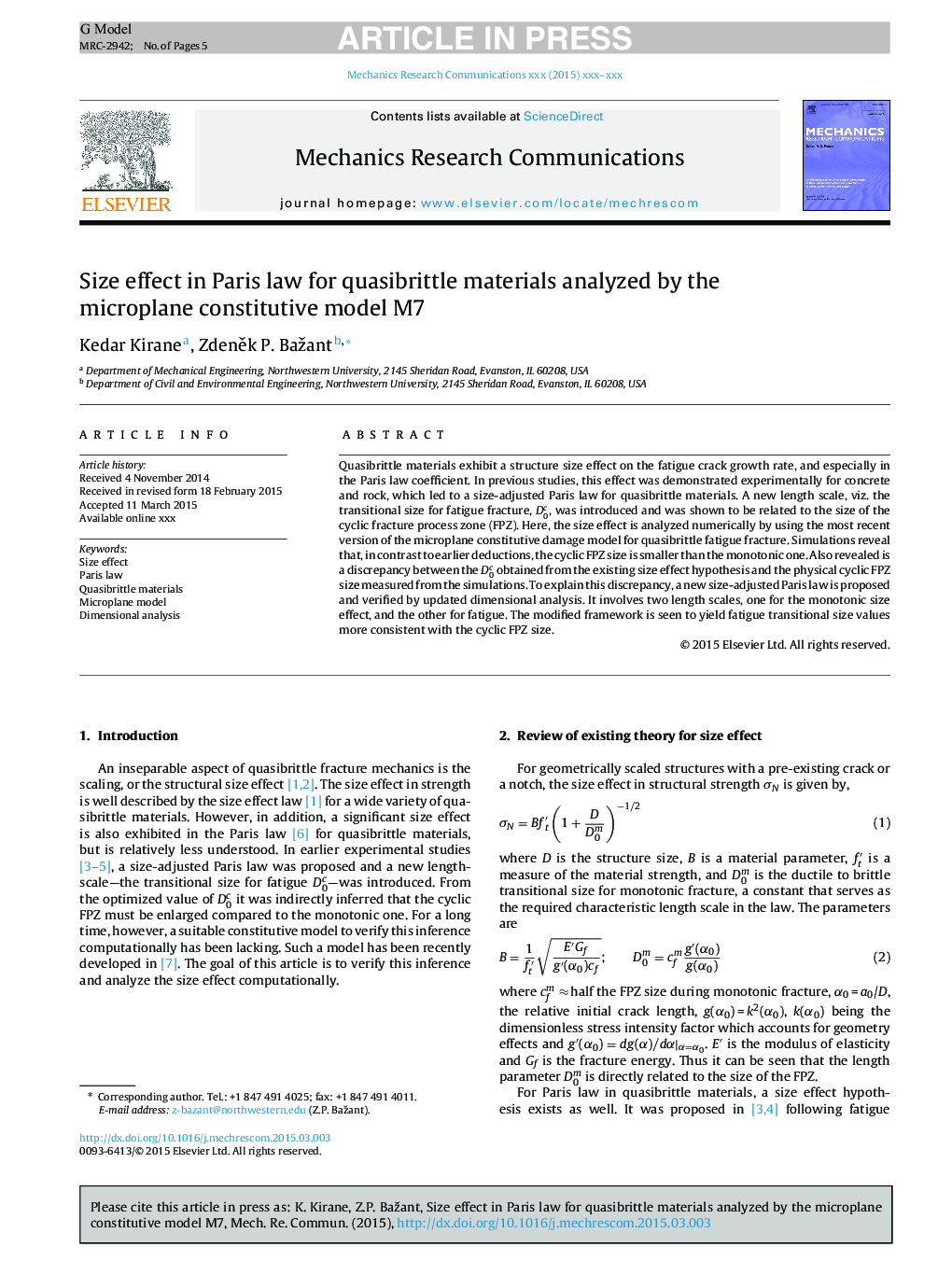| Article ID | Journal | Published Year | Pages | File Type |
|---|---|---|---|---|
| 7178829 | Mechanics Research Communications | 2015 | 5 Pages |
Abstract
Quasibrittle materials exhibit a structure size effect on the fatigue crack growth rate, and especially in the Paris law coefficient. In previous studies, this effect was demonstrated experimentally for concrete and rock, which led to a size-adjusted Paris law for quasibrittle materials. A new length scale, viz. the transitional size for fatigue fracture, D0c, was introduced and was shown to be related to the size of the cyclic fracture process zone (FPZ). Here, the size effect is analyzed numerically by using the most recent version of the microplane constitutive damage model for quasibrittle fatigue fracture. Simulations reveal that, in contrast to earlier deductions, the cyclic FPZ size is smaller than the monotonic one. Also revealed is a discrepancy between the D0c obtained from the existing size effect hypothesis and the physical cyclic FPZ size measured from the simulations. To explain this discrepancy, a new size-adjusted Paris law is proposed and verified by updated dimensional analysis. It involves two length scales, one for the monotonic size effect, and the other for fatigue. The modified framework is seen to yield fatigue transitional size values more consistent with the cyclic FPZ size.
Related Topics
Physical Sciences and Engineering
Engineering
Mechanical Engineering
Authors
Kedar Kirane, ZdenÄk P. Bažant,
